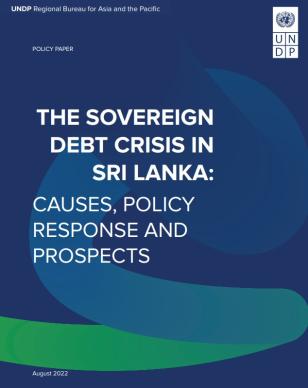The Sovereign Debt Crisis in Sri Lanka: Causes, Policy Response and Prospects

The Sovereign Debt Crisis in Sri Lanka report: Causes, Policy Response and Prospects
pdf (10.7MB)
DownloadThe Sovereign Debt Crisis in Sri Lanka: Causes, Policy Response and Prospects
November 21, 2022
During the Covid-19 pandemic, there has been a dramatic increase in national debt levels across the world, with reported cases of downgrading sovereign debt ratings and difficulty of fulfilling debt obligations (‘debt distress’) heavily concentrated in low and middle-income countries. In this context, the unfolding sovereign debt crisis in Sri Lanka has attracted worldwide attention as the canary in the coal mine for what could become a global ‘development’ crisis.
This paper examines the Sri Lankan crisis encompassing both the sources of vulnerability to the Covid-19 shock, and debt structuring and stabilisation reforms after the debt default. When the Covid-19 shock triggered the crisis, the Sri Lankan government treated it as a simple balance- of-payments disturbance that would dissipate together with the pandemic, while ignoring the systemic ‘solvency’ challenge of dealing with the massive debt overhang evolved over the previous two decades. After the default, Sri Lanka’s policy challenge is to transform the ‘twin deficit’ economy, characterized by ‘stop-go’ growth cycle, into a dynamic, outward oriented economy that can deliver sustainable, equitable growth.
The prime focus of the standard IMF approach to economic stabilization is on fiscal consolidation. It is necessary to combine fiscal consolidation with coherent expenditure switching policies to redress the long-standing anti-tradable bias in the incentive structure that has underpinned vulnerability of the economy to external shocks.

 Locations
Locations




